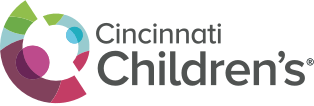Surgery for Cerebral Palsy
During the two-day mobility surgery evaluation, our experts focus on developing a unified treatment plan to improve your child's ability to walk now and in the future. This plan could include surgical recommendations, such as:
Neurosurgery Services
- Selective Dorsal Rhizotomy (SDR) involves identifying the small nerve roots (“nerve rootlets”) coming into the spinal cord from the leg muscles, and severing the ones that are contributing to spasticity. This interrupts the abnormal circuit of nerve impulses that are keeping the muscles tight.
- Baclofen Pump Implantation. Baclofen is a medication that acts on the central nervous system to relax muscles. A device called a baclofen pump delivers the medicine directly to the target site in the spinal cord.
Orthopaedic Services
Orthopaedic surgery often can maximize a child’s ability to walk. Among the many surgeries for “walkers” are:
- Tendon and muscle lengthening/transfer. Tendon lengthening surgery treats muscle contractures and can help improve motor control and gait. The orthopaedic surgeon uses tiny incisions to minimize pain and shorten recovery time. Tendon transfer surgery involves cutting a tendon and attaching it at a different location. It can improve alignment and muscle strength.
- Osteotomy. This surgery corrects bone abnormalities that develop over time. It usually involves realignment of the bone in the hips and upper or lower extremities. The surgeon may use plates, rods or screws to hold the newly shaped or repositioned bone in place.
- Guided growth surgeries. This minimally invasive approach harnesses your child’s own growth to help realign their bones or prevent abnormalities, with far less surgery, and a much easier rehabilitation.
When possible our orthopaedic team performs single-event, multilevel surgery (SEMLS). This allows the orthopaedic surgeon to do multiple procedures at once, rather than spreading them out over many years. It usually results in fewer surgeries total and only one course of rehabilitation. SEMLS can treat soft tissue and bone problems in the legs, hips and upper extremities.
Motion Analysis Lab
A gait analysis in our Motion Analysis Lab uses state-of-the art technology pinpoint the underlying contributors of walking difficulties and to further evaluate how your child’s spasticity, weakness and/or joint tightness may impact their gait pattern.
Nonsurgical Services
Nonsurgical therapies may include oral or injectable medications, physical therapy exercises and leg bracing to help improve muscle tone and function so that surgery is not necessary. Or, the team may recommend specific therapies to help your child respond better to surgery at a later time.
If the team recommends surgery, and you are interested in having the surgery done at Cincinnati Children's, we will discuss the next steps with you in detail.



